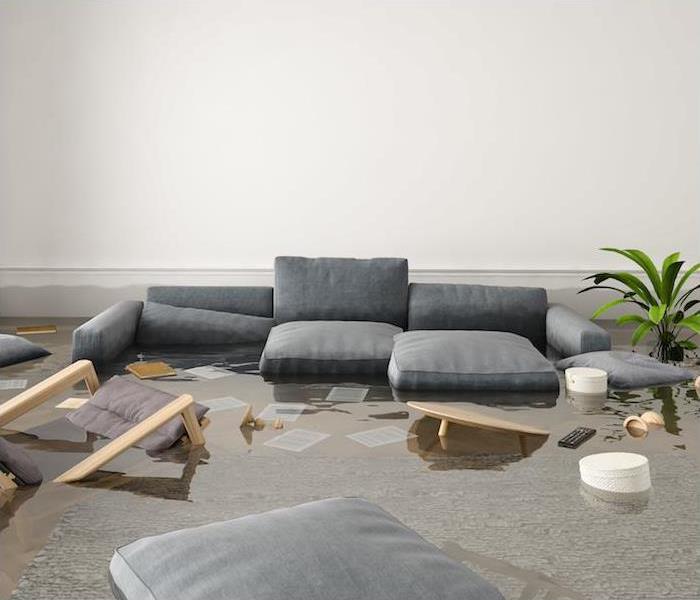Ways to Protect Your Home From Water Damage
11/19/2019 (Permalink)
Water damage is one of the most common and costliest disasters you may experience as a homeowner. From a burst pipe to a malfunctioning dishwasher or storm damage, there are countless ways water damage could strike your home.
While water damage is a common homeowner headache, there are plenty of things you can do to protect your home from some trying situations.
<h4your-home">Protecting Your Home
Not only will you find water damage a hassle to deal with, but the mold that can follow could have a long-term impact on your home. Mold will follow water damage and begins to grow and flourish within 48 hours of exposure to moisture.
When working on ways to safeguard your home from water damage, it is often helpful to break it down by areas of impact. These areas may include basements, kitchens, bathrooms, flooring and ceilings.
You can prevent water damage in the basement by preventing water seepage, which can be done by resealing vulnerable areas of the basement, making sure water drains away from your home and not toward your home’s foundation, and installing a backwater valve.
Many cases of water damage to your kitchen and bathrooms are due to plumbing issues and appliance failures.
Be sure that you regularly:
- Inspect all appliances, paying close attention to hoses and faucets
- Check the seal and caulking around your showers and tubs to make sure they are watertight
- Know the location of the main shut-off valve for water is in your home
- Don’t leave the house while the washer or dishwasher is running
Protecting the possessions in your home from water damage is not always possible, however, there are ways to store items that will at least decrease the amount of damage and loss. It is advisable to use waterproof bins to store items and keep items stored on shelves off of the floor—which is highly recommended when storing your possessions in the basement.
<h4from-water-damage">Recovering From Water Damage
You can stand a good chance at salvaging items that can be dried out within 48 hours if your home does experience a water damage situation.
Contact your insurance company immediately, evaluate the extent of the water damage in your home and identify the type of water that is involved.
Here are the three types of water to look for:
Water from rain, condensation or leaky pipes is considered “clean” water.
Slightly dirty water from dishwashers, washing machines, clean toilets, etc. is considered “gray” water.
Water from sewage or serious flooding from nearby rivers, etc. is considered “black” water. This type of water can have harmful health effects.
Following a water damage disaster, you will need to remove wet objects, get your home dried out, dehumidify the area and disinfect remaining materials.
Pro tip: By freezing wet books, photos and papers in a frost-free freezer, you prevent mold and mildew from forming on these items, giving you extra time to deal with them after you have taken care of drying out your home. Once you are able, you can remove them from the freezer and air-dry or fan-dry the pages.
It may seem like recovering from water damage is an overwhelming and slightly impossible task, but it doesn’t have to be. You can call on the highly trained experts at SERVPRO® of Garden Grove East/Anaheim Central, who are here to make it "Like it never even happened."





 24/7 Emergency Service
24/7 Emergency Service